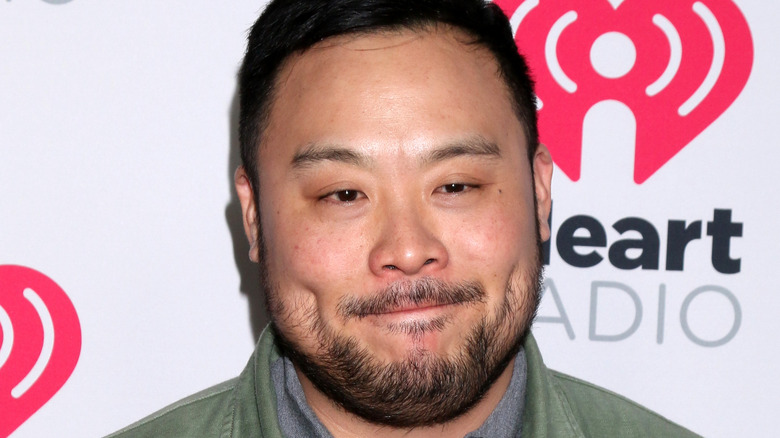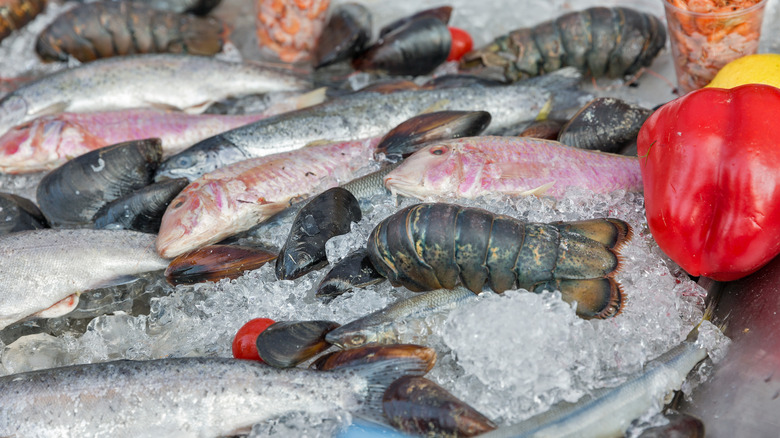The Reason David Chang Prefers To Cook With Frozen Lobster Tails
David Chang didn't build Momofuku into a culinary empire by cutting corners. The chef pays attention to detail and certainly knows his chops — so it might surprise foodies to learn that when Chang is preparing lobster tails, he prefers frozen. According to the chef, frozen lobster tails are easier to de-shell than fresh ones. As he shared on TikTok, "I actually like frozen lobsters. It's hard to tell the difference, and it's easy to crack when they're frozen and they defrost because of the expansion of the water. It actually separates from the shell quite easily."
You've probably heard that you should buy lobster fresh, not frozen, to avoid the risk of food poisoning. Indeed, vibrio bacteria — the kind often responsible for illness from undercooked seafood, per the CDC — can contaminate the meat within just one hour after a lobster dies. However, there is a caveat: The tail and claws can be quickly amputated and frozen, and the quality of the meat will remain firm and intact.
To this point, Chang makes an important clarification — size matters here. In the description section of the TikTok video, Chang writes, "I really don't like claw or knuckle meat frozen, but tail meat is quite good frozen. I dare say the bigger the lobster tail freezing them tends to tenderize them. Smaller frozen tails sometimes have a mushy texture." So play it safe and look for larger tails as you browse your supermarket's freezer section.
After Chang de-veins his frozen lobster tails, his cooking process gets even more interesting.
De-shell with ease and slam 'em in the microwave (yes, really)
Professional chefs may seem inaccessible and unrelatable at times, but that certainly isn't the case if you ask David Chang how to properly cook lobster tail. (In the TikTok, he even shares that he picked his ingredients up from Costco.) Not only does the world-renowned chef surprisingly prefer cooking with frozen lobster tails, but his preferred cooking method is none other than the microwave.
As he explains in the TikTok, "It seems all kinds of wrong to do — I'm completely aware of that. But when you think about the science of the microwave effectively as a steamer, it's a wonderful way of cooking shellfish." The chef isn't alone in his preference, either. Rich Vellante, executive chef of New England's Legal Sea Foods, also prefers cooking lobster in the microwave. Alton Brown (a longtime champion of unconventional cooking techniques) swears by the microwave as the ultimate tool for steaming Alaskan King Crab legs.
Just keep in mind that for a successful butter-poach, "You do have to change the power level — otherwise, you will get something really rubbery," says Chang. He microwaves his seasoned tails in a lidded glass bowl for five minutes at 50% power, then lets it rest for another five minutes before removing the lid. It looks like your Lobster Newburg, lobster rolls, lobster mac and cheese, and seafood Bloody Marys are about to get a whole lot more accessible!

